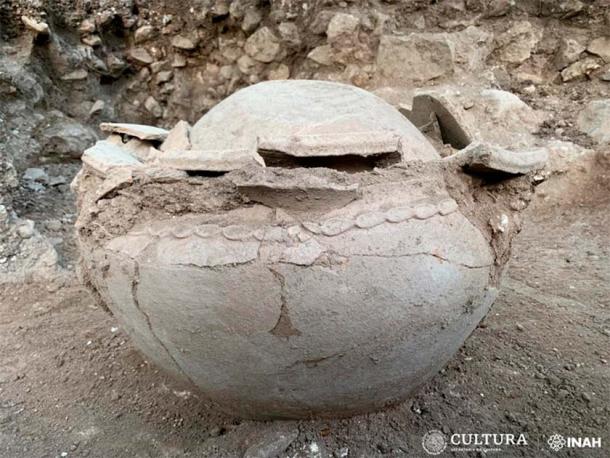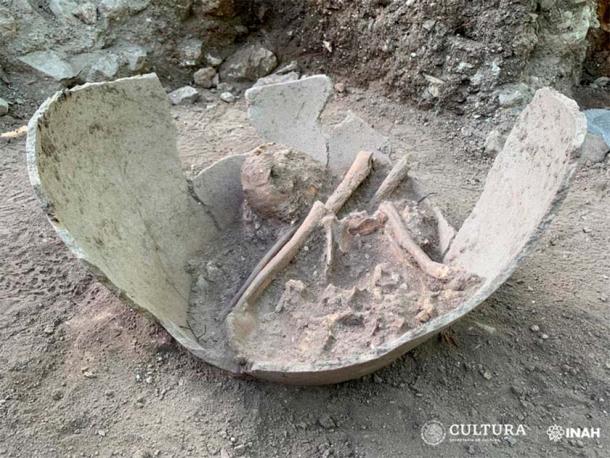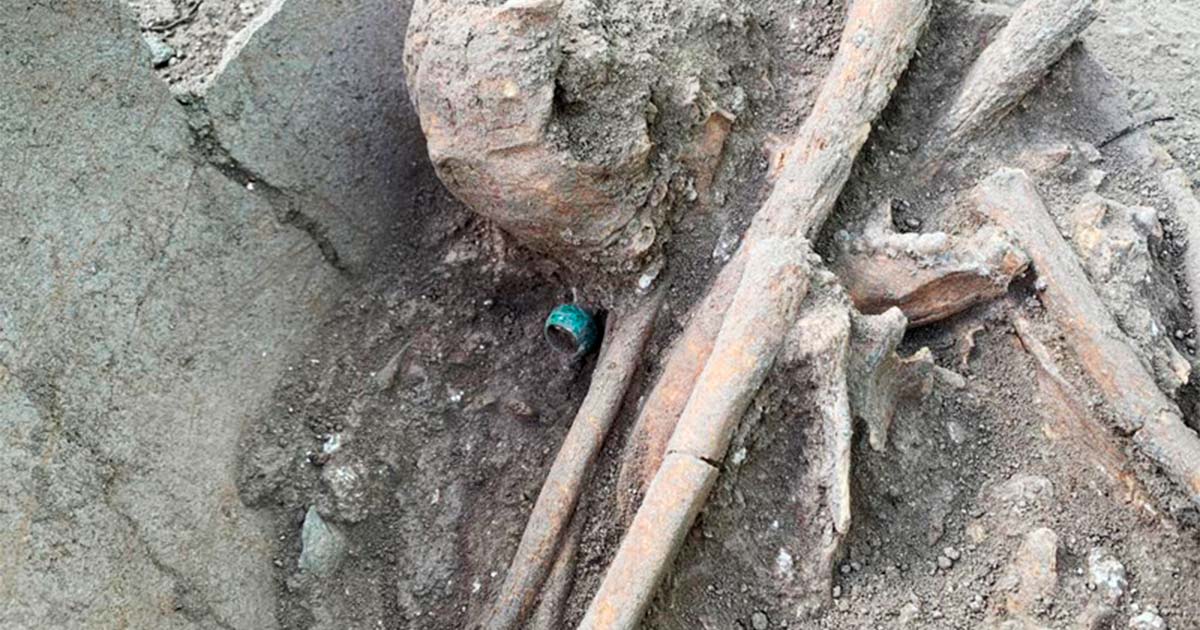Ancient Jade Ring Found on Young Sacrificed Mayan Who Was Buried in a Jar
Amidst the enigmatic enclave of El Tigre in Mexico, archaeologists have unearthed the skeleton of a young, sacrificed Mayan with a large jade ring. Glowing in its muddy grave the bright-green ancient relic whispers of bygone rituals that once wove existence and demise into an intricate choreography of transcendence.
The National Institute of Anthropology and History (INAH) reported that the discovery was made during recent excavations in the Mexican state of Cameche, near the Rio Candelaria, at the Maya city of El Tigre. Also known as “Itzamkanac” (place of the lizard serpent), El Tigre was first settled in the Middle Preclassic period (600 – 300 BC) and it was occupied until approximately 1557 AD, when the Spanish conquest occurred.
Serving as the political capital of the province of Acalán, a branch of either the Chontal Maya or the Putún Maya, El Tigre was renowned for its trading activity and as a ceremonial center, which is evident in the large stucco masks on display. And it was here that the Spanish conquistador Hernán Cortés ordered the slaughter of Cuauhtémoc, the last free ruler of the Aztec Empire.

The excavation site at El Tigre where the burial vessels were found. Credit: INAH Campeche.
Jade In a Cosmic Context
Diego Prieto Hernández, the general director of the National Institute of Anthropology and History (INAH,) said the jade ring was found inside a sacred vessel at Structure 1 of the El Tigre Archaeological Zone, located to the west of the main pyramid temple. It is thought that the ring probably belonged to “a young individual, buried around the Late Classic period (600-800 AD).”
Revered for its vibrant green hue, in pre-Columbian Mesoamerica Jade held immense cultural and symbolic significance among elite Maya, Aztec, and Olmec families. Jade artifacts and jewelry featuring deities and creatures not only reveal its role in religious rituals and social hierarchy, but also its connection to fertility, life, and the cosmos.
- Jade Beauty: 15 Must-See Artifacts in Pictures
- New Discovery Suggests That Maya Elites Danced Wearing As Much As 25 Pounds of Jade Jewelry

The burial vessel in which the young, sacrificed Mayan was found at El Tigre. Credit: INAH Campeche.
Shaping Artistic, Social and Religious Landscapes
Across ancient Mesoamerica Jade was imbued with deep religious and spiritual importance and during rituals and ceremonies the stone was symbolically associated with the sun, the wind, and with life and death. The precious stone is a testament to the artistic mastery, spiritual beliefs, and societal complexity of Mesoamerican civilizations, and as such, jade was a valuable trade item and tribute. Thus, jade helped shape the artistic, social, and religious landscapes of ancient Meso-American cultures.
Diego Prieto Hernández from INAH explained that archaeologists have now identified “177 pre-Hispanic human burials” between Palenque, in Chiapas, to Escárcega, in Campeche. Hernández added that since August 14, 2023, “2,698 real estate have also been preserved; 248 furniture elements; 281,353 ceramic fragments and 55 natural features associated with the presence of ancient human groups”.
However, this particular skeleton was different, as it was deposited as part of a funerary offering comprising two large-format vessels covered with ceramic bowls, as lids. The sacrificed human was positioned in a flexed position beside the well-preserved jade ring, demonstrating that the deposit was made in the Late Classic period, which is regarded as the period in which El Tigre peaked in regional power.

The burial vessel in which the young, sacrificed Mayan was found at El Tigre. Credit: INAH Campeche.
A New Site for Archaeological Tourists
Not only is archaeological research being conducted at Section 1 of the El Tigre Archaeological Zone, in Campeche, but also at the Market Square and the Main Square, and at the so-called “Triadic Complex.” This Great Central Acropolis at El Tigre is composed of 15 large structures and countless smaller structures distributed along an area of around 85,000 m 2, and when the excavations have been completed the area will be opened for tourists.
The general director of INAH said a building is also being erected with interpretation panels and signage for visitor. Very soon, the spectacular ruins at El Tigre will be offering tourists new insights into the complexities of the social structures, religious practices, and daily life of ancient Mesoamerican civilizations, and how they interacted with the changing natural world that surrounded them.
Top image: The Mayan victim with the jade ring at El Tigre. Credit: INAH Campeche.
By Ashley Cowie

















